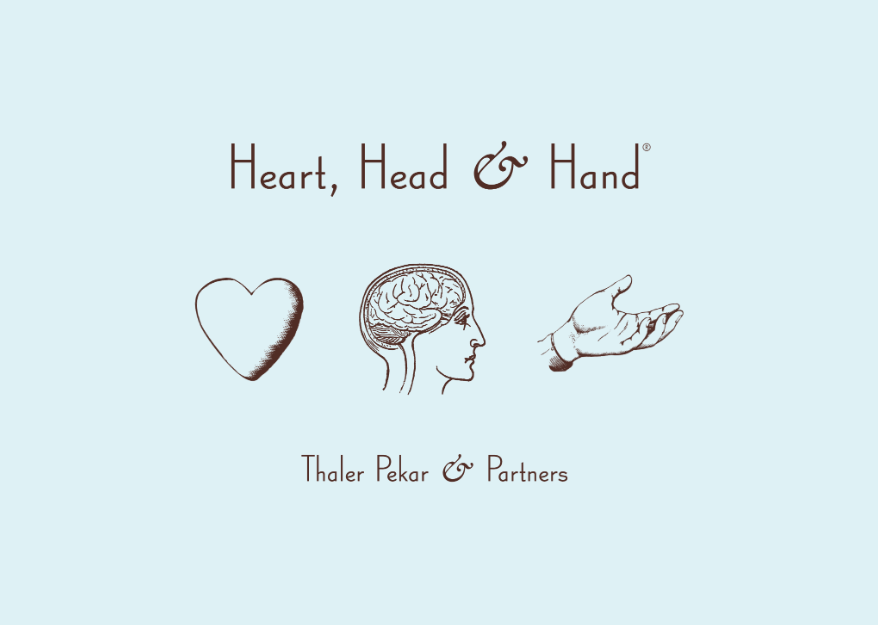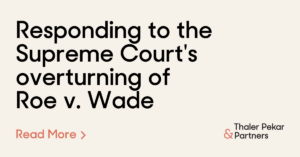4 min read
Heart, Head & Hand®: An Advanced Approach to Persuasive Communication

This piece was originally published in 2010 on Philanthropy News Digest.
For the past year, I’ve been writing here at PhilanTopic about the use of story for knowledge sharing, board and staff development, and communication. Story is, in fact, an extremely effective persuasive communication tool — and one that can be applied in a larger communication framework I call Heart, Head & Hand®.
Heart, Head & Hand® is a fresh approach to a traditional concept of communication in which the order of the three steps is vitally important: 1) establish rapport and seek empathy with your listener (heart); 2) appeal to your listener’s — and your own — desire for proof points by offering supportive evidence (head); and 3) remember to ask your listener to take action (hand).
As with all strategic communication, you start with an end goal in mind. There’s a reason why you strive to impart information: you want the recipient of that information to do something with it. In most cases, you want your listener to take some kind of action. So start by focusing on what it is you want your listener(s) to do. Strive for specificity. The desired action could be anything from making a seven-figure donation, to calling his or her senator or representative, to a simple request to “Please consider our conversation.”
Once you’ve formulated a clear understanding of the action you want your listener to take, think of how you can help him or her connect to the information you want to share. Neuroscience, brain imaging, cognitive and behavioral psychology studies all have shown that new information can only be connected to things we already know. Meaning is created when your listener can associate the information you want to impart with things he or she already understands.
As John Steinbeck put it in East of Eden, “The strange and foreign is not interesting — only the deeply personal and familiar.” You want your listener to take action because they want to — not because they’ve been told to. When you enable your listener to connect your information to what they already know, you’re facilitating their understanding and stimulating their desire to take action. If people discover things on their own, they’re more likely to not only act but to sustain that action.
Not long ago, I was working with pediatricians at Montefiore Medical Center who were striving to reduce the alarming rate of obesity in their patient population and trying to convince their young patients’ parents to introduce new diet and exercise routines into their homes. Many of the doctors found it effective to begin their conversations with parents and patients by sharing a personal story about why they decided to become a doctor and then asking the children to share a story about what they wanted to be when they grew up and asking the parents to share their dreams for their children. This aspirational exercise primed the parents for the dietary and exercise information that followed and helped make the conversation much more meaningful for the children. By fostering an emotional connection and then delivering information and a call to action, the pediatricians were able to persuade both their patients and their patients’ parents to adopt and maintain healthy behaviors.
What I’m suggesting is a defined order of communications based on history, experience, and a modern understanding of the science behind cognition, emotion, and memory. If you jump right in with facts and data — if you appeal first to the head — it could come back to haunt you. As the late John Kenneth Galbraith noted when summarizing the dangers inherent in asking people to do something new and different based on facts alone: “Faced with the choice between changing one’s mind and proving there’s no need to do so, almost everyone gets busy on the proof.”
In The Secret Language of Leadership, Stephen Denning suggests that “Giving a talk full of abstract reasons arguing for change can quickly turn an audience into an army of strident cynics”:
[I]f reasons are given before the emotional connection is established, they are likely to be heard as so much noise. Worse, they tend to flip, becoming ammunition for the opposite point of view. By contrast, if the reasons come after an emotional connection has been established with the change idea, then the reasons can reinforce it, because now listeners are actively searching for reasons to support a decision they have in principle already made….
It’s not a radical approach. Indeed, twenty-four hundred years ago, Aristotle described the three elements needed to move an audience — logos, pathos, and ethos — that is, an appeal based on intellect, emotions, and the speaker’s character and charisma. A generation ago, the community organizer Saul Alinsky argued that communication
with others takes place when they understand what you’re trying to get across to them. If they don’t understand, then you are not communicating regardless of your words, pictures or anything else. People only understand things in terms of their experience, which means that you must get within their experience….
And Tony Schwartz, in his seminal 1973 book on television and advertising, The Responsive Chord, wrote:
The critical task is to design our package of stimuli so that it resonates with information already stored within an individual and thereby induces the desired learning or behavioral effect. Resonance takes place when the stimuli put into our communication evoke meaning in a listener or viewer. That which we put into the communication has no meaning in itself. The meaning of our communication is what a listener or viewer gets out of his experience with the communicator’s stimuli. The listener’s or viewer’s brain is an indispensable component of the total communication system. His life experiences, as well as his expectations of the stimuli he is receiving, interact with the communicator’s output in determining the meaning of the communication….
Again, to communicate effectively, you have to connect new to existing information. You want the people you are trying to move to action to make that decision based in part on memory and predictive associations. Rather than pushing your audiences with fact alone, the idea is to pull them toward the thing they desire, which is to imagine themselves as a part of the solution.
The Heart, Head & Hand® framework is an emergent, participatory, and modern approach to persuasive communication. It respects your listeners and invites them to be a part of your solution. As the environmentalist and communications consultant Tom Bowman says, “To the extent people can’t solve a problem, they tend to ignore that problem.”
Thaler Pekar & Partners is internationally-recognized for its deep expertise in narrative, story, and communication. Both the BBC and the Smithsonian Institution have hailed the founder, Thaler Pekar, as one of the world’s leading experts on institutional storytelling.
For 14 years, the team at Thaler Pekar & Partners has advised visionaries on being understood and influential. Our trademarked communication processes — Heart, Head, & Hand®, Engagement Equation® and Invitational Incline® — provide leaders with the confidence to speak, listen, and be heard, and sustain them in offering effective motivation. As a result, teams are more productive, audiences are more receptive, and visibility increases.
Our award-winning work ranges from gathering 178 oral histories across four continents and six countries for Chuck Feeney’s The Atlantic Philanthropies; to finding and refining stories about integrity for Novartis senior leadership; to coaching a mainstage TED Talker; and to developing a communication and story skills academy for L’Oreál International Educators and Customer Representatives.







